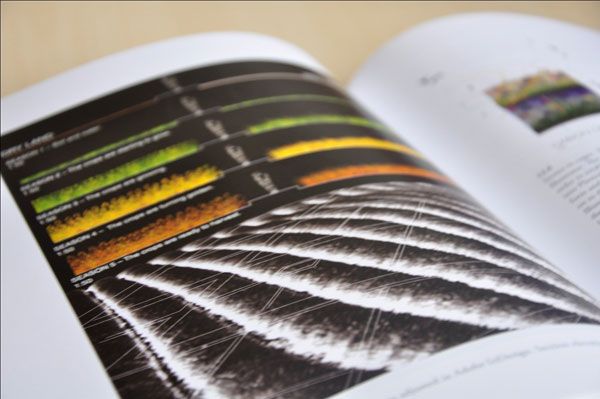A book review of Representing Landscapes: Digital by Nadia Amoroso. Landscape architecture has benefitted a lot from advancements in technology, with digital media techniques allowing specialists from the field to show both their talent and imagination. ‘Representing Landscapes: Digital’ is the kind of book that you instantly fall in love with, presenting the digital media techniques used in the field of landscape architecture, from the point of view from different experts in the field. Edited by Nadia Amoroso (link to interview), a renowned name in the field of landscape architecture and with a foreword from James Corner, professor of Landscape Architecture, this book is useful for both students and specialists alike.

Front cover of Representing Landscapes: Digital
, Professor James Corner talks about the way this amazing book brings the fields of landscape architecture and digital media together. He highlights the diversity of digital techniques included within the book, leading to endless possibilities of design. In the opinion of James Corner, it is because of digital media that we are able today to visualize landscape architecture projects in a way that is both creative and functional at the same time. James Corner describes this book as ‘exciting’ and ‘provocative’, stating that it offers ‘endless possibilities’ for innovation and design.
Representing Landscapes: Digital
The introduction bears the trademark signature of Nadia Amoroso, landscape architect, teacher and book author. In her opinion, this book provides the most amazing visual representations that were made by students from different parts of the world, all of them being realized with the help of digital media. Mrs. Amoroso describes this book as ‘instructional’ and ‘inspirational’, recommending it to those who are working or studying in the field of landscape architecture.

Front cover of Representing Landscapes: Digital
In this book, the theoretical knowledge blends perfectly with the case projects, matching to perfection the modern needs of landscape designers. The chapters of the book are organized in accordance to the drawing type, providing information about concepts such as presentation plans, diagrams, mapping, sections, and perspectives. Each of the specialists who have contributed to the book has focused on a particular type of drawing, adding a series of captivating digital landscape representations made by students. After taking you into the wonderful world of digital media techniques – with concepts such as datascaping, axonometric’s, sections and elevations, perspective drawings and photoshopping brought into the center of attention – the books ends with an amazing series of drawings (case projects). Looking at the way the book is organized and analyzing the kind of information it offers, it is safe to assume that this is one useful resource for those who are interested in representing landscapes through digital media.
Get it Here! 
Inside Representing Landscapes: Digital. Photo credit: Alexandra Antipa
The ‘Diagrams and Mapping Drawing’ is the first large chapter of the book, including four sub-sections written by people with experience in the field. Andrea Hansen talks about datascapes (maps and diagrams as landscape agents) while Eva Castro and Federico Ruberto discuss photographing the hyper- index, 3D representations, and spatiotemporal interfaces. James Melsom discusses mapping and refining designing with the help of digital media.

Inside Representing Landscapes: Digital. Photo credit: Alexandra Antipa
Kofi Boone talks about digital diagramming and its important role for the field of landscape architecture. In the ‘Presentation Plans’ chapter, you can find three sub-sections. In the first sub-section, Joshua Zeunert discusses digital presentation plans. Karl Kullmann speaks about illustrative plans and bird’s eye views while Roberto Rovira brings to the discussion the role of the side plan in the modern field of landscape architecture.
Axonometric Dedicated Chapter The ‘Axonometric Drawings’ chapter includes two sub-sections – the first one discusses chunking landscapes, bearing the signature of Christopher Marcinkoski. The second sub-section reveals about the subject of landscapes that fit together, with Maria Debije Counts signing as an author. You can continue reading, discovering the ‘Section-Elevations’ chapter, with three interesting sub-sections. For the first one, Daniel H. Ortega and Jonathon R. Anderson talk about the different vertical plane typologies and the way sections and elevations can be examined. The chapter continues with Dietmar Straub and the decryption of landschaftslinien, followed by Andrew Hartness and origins of the subjective sections.
Get it Here! 
Inside Representing Landscapes: Digital. Photo credit: Alexandra Antipa
In the ‘Perspectives’ chapter, you can find information about the role of perspective in analyzing a landscape (Maria Debije Counts), about the role of metrics and emotions in the visualization of different projects (Andrew Hartness) and also about hover craft (David Fletcher). The ‘Digital Modeling and Fabrication’ chapter provides information about: land formation and tectonic ground (José Alfredo Ramirez, Clara Olóriz Sanjuán), terra automata (Bradley Cantrell), the role of digital media in practice (David Mah).

Inside Representing Landscapes: Digital. Photo credit: Alexandra Antipa
Last, but not least, comes the ‘All Drawing Types: Case Studies’ chapter – here you have the opportunity to discover case projects such as: ‘Jakarta – Plastic River’ (Christophe Girot, James Melsom), ‘Greyfield sites’ (Kofi Boone) and ‘Creek – Arroyo, Puerto Rico’ Roberto Rovira). After reading this book, you will remain with a pleasant sense, as you will understand how important digital media has become for the field of landscape architecture.
Review by Alexandra Antipa Return to Homepage
Published in Blog














